A musical DIY shaitan machine or what a Swedish musician did with two thousand balls
Once again, the reason for publication was the work of musicians. This time they turned out to be the Swedes from the instrumental group Wintergatan. Seeing that the permanent leader of the team, Martin Mulin and his colleagues, built it, I realized that it was worth writing about it. A mechanical semi-automatic acoustic instrument called the Marble machine is amazing. Skeptics have suggested that this cannot work at all. The inventiveness of the author, the ambitiousness of the project and the courage of the design border on the best manifestations of creative craziness.
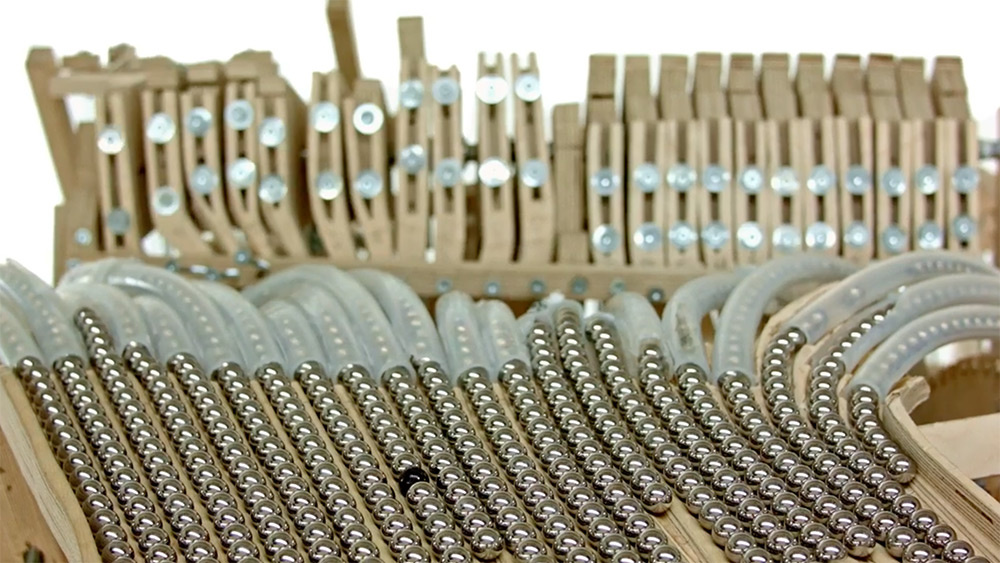
Complex and painstaking work on the instrument began about 3 years ago and lasted for 14 months. By February 2016, Wintergatan had completely completed work on the Marble machine. The presentation video published by the group blew up YouTube and currently has over 40,000,000 views.

It should be noted that this is not the first time that the team has been creating interesting mechanisms, which can be seen by watching their many videos.
For example, this one, where Martin plays on a huge music box with punched tape and some wild variety of Theremin's cello called Modulin
Interestingly, in childhood, the creator of the machine, Martin Mulin, loved to draw various mechanisms. The musician’s childhood enthusiasm did not pass with age, now he not only draws them, but also successfully builds them. That contraption, which is discussed in this post, exceeded even the most daring expectations of fans of the group, accustomed to the extravagant antics of Mulin. The principle underlying the machine is as follows:
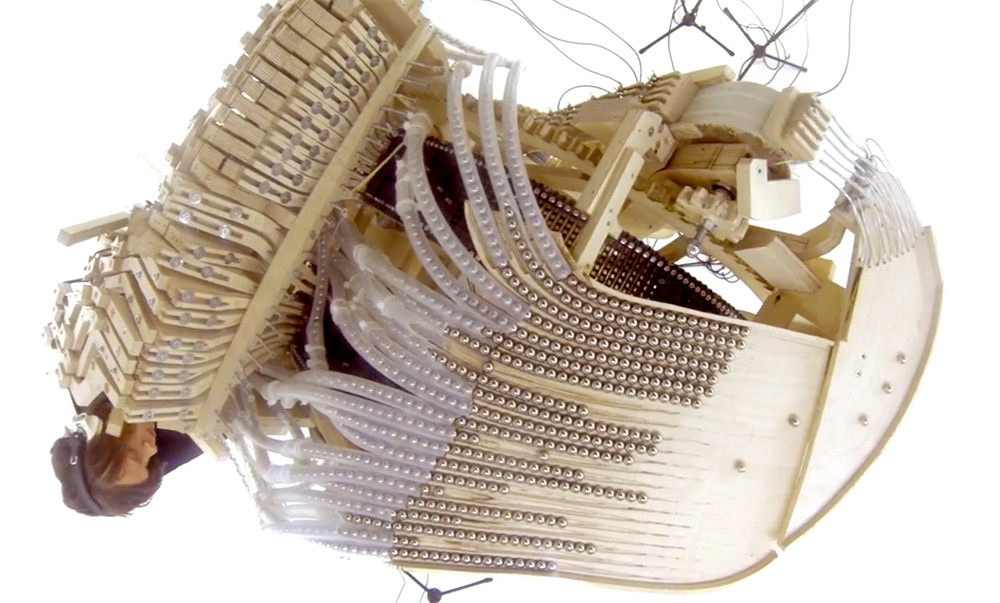
A complex mechanism set in motion by the muscular strength of the musician’s hands (like a barrel organ) makes the balls move, which in a certain order fall on the instruments and extract sounds from them. It looks like this - a person twists the handle of the drive, the balls fall, and a melody appears. The order of falling of the balls is determined by a special "software" wheel, acting like a roller of a huge music box.
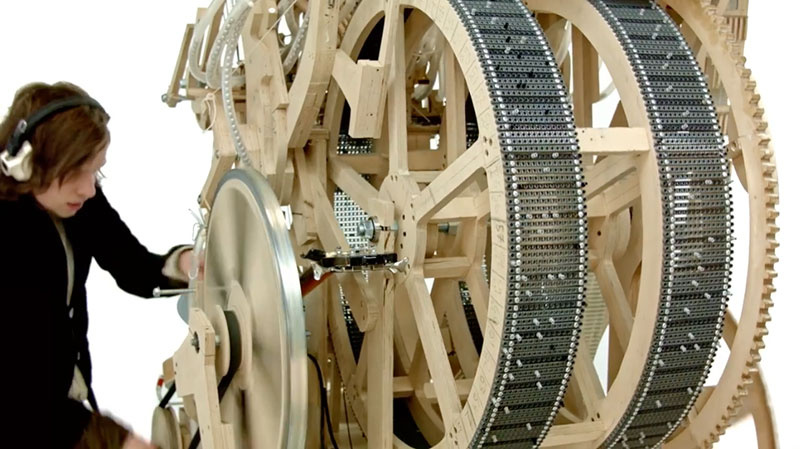

The drum (soft wheel) indicates that the creator of the machine seriously studied similar devices of the 18th - 19th centuries. This is evidenced by other inventions of Mulin, as the already mentioned “box” with punched tape and a mechanical piano, with which the musicians also experimented.
Although it might be better to just watch the video:
I think that many will agree with me, playing the melody on such an instrument is a truly bewitching sight.
Numerous pedals, keys and levers are used as controls for the combined instrument, and ordinary polished rice is used to create some percussion sounds. In total, over 3000 moving parts were used to create the machine. The vast majority of the spare parts of the device were sawn on a CNC machine from plywood.
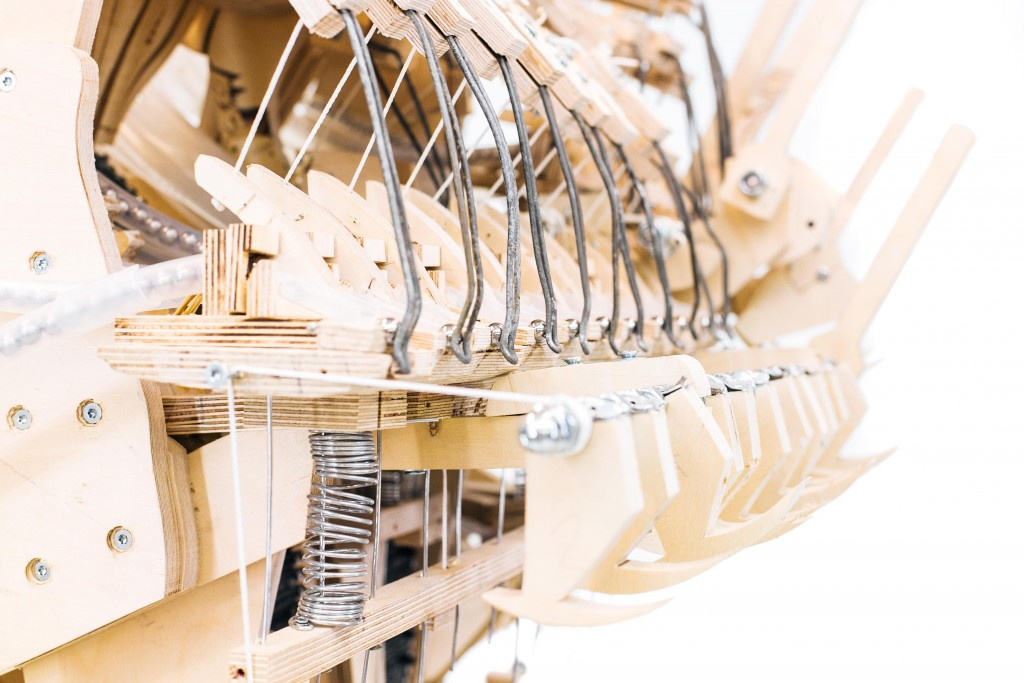
The vintage look of the instrument reminded me of one animated movie that I first saw a few years ago. The video showed a surreal nonexistent automated string-plucked instrument with a large number of vultures.
It is possible that this well-known video on the network was one of the sources of inspiration for the musician-inventor.
About how the machine works, Mulin spoke in detail in the relevant video:
Interestingly, for high-quality sound reproduction, the machine is equipped with a large number of microphones installed in a special way (they allow you to hide the noise of the working mechanism and amplify the sound). Switching takes place through the mixing console, which is also an integral part of the instrument.

As the inventor himself said in an interview, the instrument was conceived as something like a mechanical DJ installation that allows you to combine the performance of a pre-recorded melody and making changes in it in real time.
As it turned out, Mulin does not suffer from the “Stradivarius complex” and does not seek to hide from people, taking the secret of success with him to the grave. As a true altruist and enthusiast, he decided to share the invention with the world, posting in open access a huge amount of video materials about the principles of the machine, as well as information about assembly, debugging and tuning.
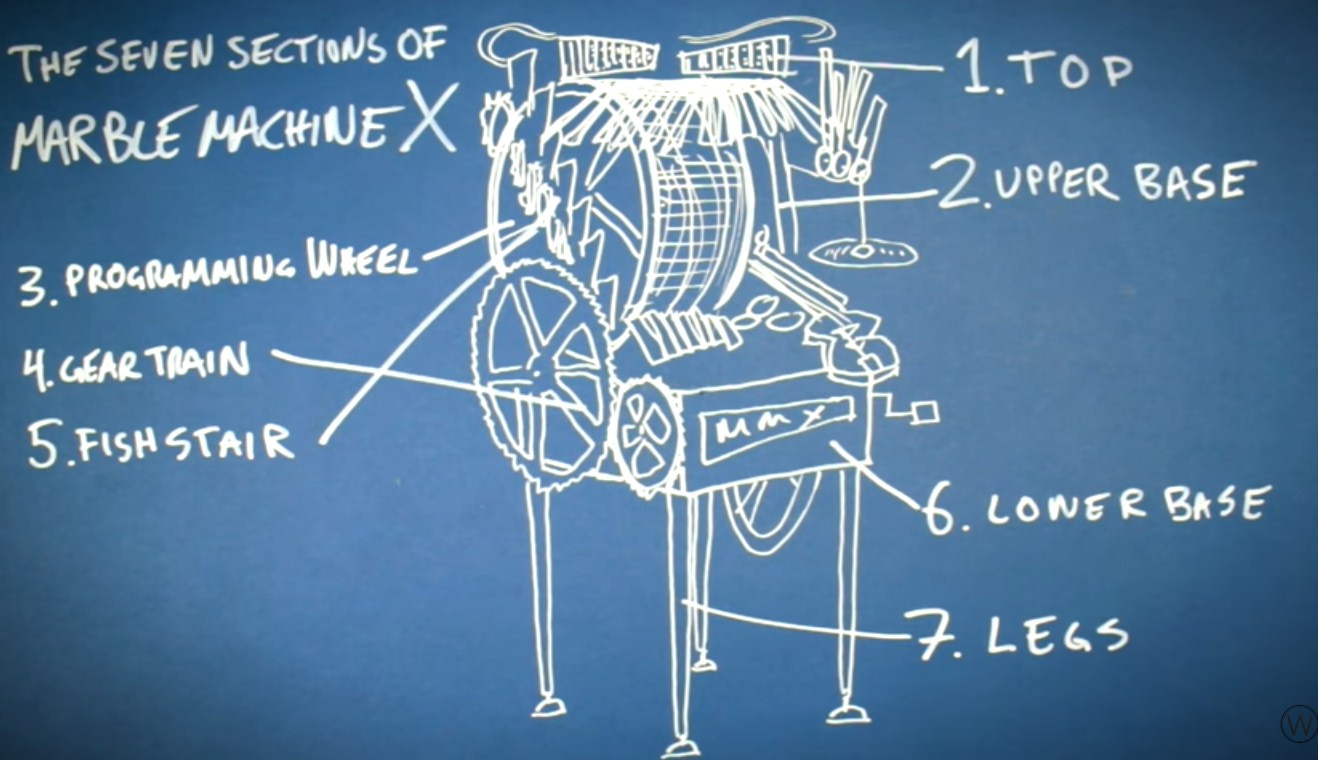
He explains in detail how and what is arranged, answers the many questions asked by engineers, musicians and representatives of DIY-fraternity. All materials are available on the YouTube channel of the group, as well as on the official website.
I enclose several such videos below, more details will be available on the channel and website of the group, where a special section has been created for those interested .
According to the author, the standard musical instruments, microphones, mixer, plywood, wood and other generally accessible materials are enough to create a machine. As for the equipment, the most difficult thing that was used to create the parts is the CNC machine, unless, of course, the inventor’s brain is considered equipment.
Mulin's experience once again demonstrates that the enthusiasm of fanatical loners is capable, if not moving mountains, then making steel balls “sing”. Perhaps, Mulin's car is one of the most unusual musical instruments that I have ever seen. And yet, it is especially valuable that the musician shares his experience and makes efforts to captivate other enthusiasts with the creation of non-standard and original instruments.
The creative impulse of the musicians, inspired by the brainchild of Mulin, was not long in coming. Many of them created covers for a work performed using a machine in a presentation video. A year later, the group published a video with a cut of a variety of covers on the Marble Machine with the note: “This made me so happy!”
PS Unfortunately, I could not find the drawings of the car, although judging by the messages on some forums they walk around the network. If someone accidentally finds the DXF desired by many or is already their owner - drop the link in the comments, people will thank you.

Some details
Complex and painstaking work on the instrument began about 3 years ago and lasted for 14 months. By February 2016, Wintergatan had completely completed work on the Marble machine. The presentation video published by the group blew up YouTube and currently has over 40,000,000 views.

It should be noted that this is not the first time that the team has been creating interesting mechanisms, which can be seen by watching their many videos.
For example, this one, where Martin plays on a huge music box with punched tape and some wild variety of Theremin's cello called Modulin
Interestingly, in childhood, the creator of the machine, Martin Mulin, loved to draw various mechanisms. The musician’s childhood enthusiasm did not pass with age, now he not only draws them, but also successfully builds them. That contraption, which is discussed in this post, exceeded even the most daring expectations of fans of the group, accustomed to the extravagant antics of Mulin. The principle underlying the machine is as follows:
music is reproduced through the interaction of 2,000 balls with percussion instruments, bass guitar and metallophone, which are mounted on a wooden frame.

A complex mechanism set in motion by the muscular strength of the musician’s hands (like a barrel organ) makes the balls move, which in a certain order fall on the instruments and extract sounds from them. It looks like this - a person twists the handle of the drive, the balls fall, and a melody appears. The order of falling of the balls is determined by a special "software" wheel, acting like a roller of a huge music box.


The drum (soft wheel) indicates that the creator of the machine seriously studied similar devices of the 18th - 19th centuries. This is evidenced by other inventions of Mulin, as the already mentioned “box” with punched tape and a mechanical piano, with which the musicians also experimented.
Although it might be better to just watch the video:
I think that many will agree with me, playing the melody on such an instrument is a truly bewitching sight.
Numerous pedals, keys and levers are used as controls for the combined instrument, and ordinary polished rice is used to create some percussion sounds. In total, over 3000 moving parts were used to create the machine. The vast majority of the spare parts of the device were sawn on a CNC machine from plywood.

The vintage look of the instrument reminded me of one animated movie that I first saw a few years ago. The video showed a surreal nonexistent automated string-plucked instrument with a large number of vultures.
It is possible that this well-known video on the network was one of the sources of inspiration for the musician-inventor.
About how the machine works, Mulin spoke in detail in the relevant video:
Interestingly, for high-quality sound reproduction, the machine is equipped with a large number of microphones installed in a special way (they allow you to hide the noise of the working mechanism and amplify the sound). Switching takes place through the mixing console, which is also an integral part of the instrument.

As the inventor himself said in an interview, the instrument was conceived as something like a mechanical DJ installation that allows you to combine the performance of a pre-recorded melody and making changes in it in real time.
Swedish attack of altruism
As it turned out, Mulin does not suffer from the “Stradivarius complex” and does not seek to hide from people, taking the secret of success with him to the grave. As a true altruist and enthusiast, he decided to share the invention with the world, posting in open access a huge amount of video materials about the principles of the machine, as well as information about assembly, debugging and tuning.

He explains in detail how and what is arranged, answers the many questions asked by engineers, musicians and representatives of DIY-fraternity. All materials are available on the YouTube channel of the group, as well as on the official website.
I enclose several such videos below, more details will be available on the channel and website of the group, where a special section has been created for those interested .
According to the author, the standard musical instruments, microphones, mixer, plywood, wood and other generally accessible materials are enough to create a machine. As for the equipment, the most difficult thing that was used to create the parts is the CNC machine, unless, of course, the inventor’s brain is considered equipment.
In conclusion
Mulin's experience once again demonstrates that the enthusiasm of fanatical loners is capable, if not moving mountains, then making steel balls “sing”. Perhaps, Mulin's car is one of the most unusual musical instruments that I have ever seen. And yet, it is especially valuable that the musician shares his experience and makes efforts to captivate other enthusiasts with the creation of non-standard and original instruments.
The creative impulse of the musicians, inspired by the brainchild of Mulin, was not long in coming. Many of them created covers for a work performed using a machine in a presentation video. A year later, the group published a video with a cut of a variety of covers on the Marble Machine with the note: “This made me so happy!”
PS Unfortunately, I could not find the drawings of the car, although judging by the messages on some forums they walk around the network. If someone accidentally finds the DXF desired by many or is already their owner - drop the link in the comments, people will thank you.
